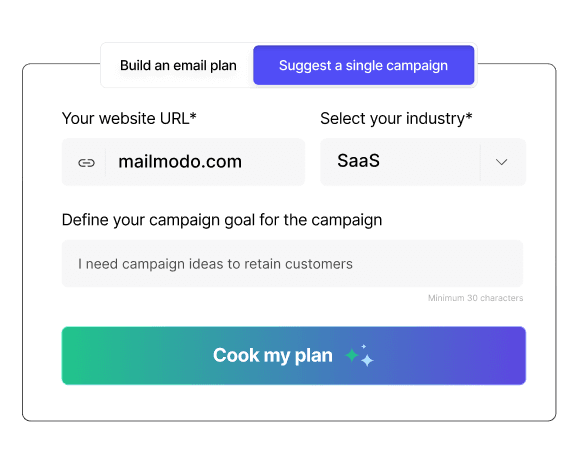Email marketing response rate reflects engagement, interest, and potential leads. A strong response rate signifies effective content and can drive conversions, making it a vital success metric. This guide covers email marketing response rate statistics, its importance, and how to improve it.
Email Marketing Response Rate and Ways to Improve It
What is an email marketing response rate?
An email response rate is a metric that indicates the percentage of recipients who respond to an email campaign or message. It is commonly used in marketing and communication efforts to measure the effectiveness of email outreach. Analyzing the email response rate lets you gauge whether your cold email strategy genuinely contributes to your company's success.
How to measure email marketing response rate?
The formula to calculate the email response rate is:
Response Rate = (Number of Responses / Number of Emails Sent) X 100
For example, if you sent out 1000 emails and received 50 responses, the response rate would be (50 / 1000) * 100 = 5%.
Once you calculate the response rate, it's time to interpret the results:
A higher response rate is generally positive, indicating that your email content resonates with recipients.
A lower response rate might suggest the need for improvements in your email content, subject lines, targeting, or other elements of your strategy.
Is response rate important?
Email marketing response rate helps us see how engaged people are with your emails. Basically, it shows if subscribers like what you send them. If more people respond, it might mean they like your content and trust you.
These aspects contribute to an expanding count of subscribers poised for conversion. A notable email response rate increases both sales and the generation of fresh and high-quality leads, so it is indeed an important email marketing metric. Tracking and analyzing response rates is important to refine email marketing strategies and achieve better results.
You can analyze further and compare response rates between different email campaigns to identify which types of content or messaging generate better engagement.
What is a good response rate?
Before we get to discussing what a good response rate is, here are some interesting response rate statistics to know about:
An average email response rate is somewhere between 8.5-10%. -Campaign Monitor
Backlinko’s email outreach study discovered that only 8.5% of outreach emails get a response, while the rest gets ignored or deleted.
Based on information from Yesware, if someone doesn't reply to your first email, there's a 21% chance they'll reply to your second one. Even if you don't get a response yet, don't worry. Keep trying because there's a 25% chance they'll eventually get back to you.
The email response rate varies from industry to industry and campaign to campaign. If you have a response rate of less than 10%, you should be working on your email marketing strategies to boost your open and response rates. Ideally, you can use your open rates to keep the response rate benchmark according to it. You cannot aim for a higher response rate if your open rates are not performing well.
💡 Related guide: Master B2B Email Open Rates and Other Statistics in 2023
How to improve the response rate?
If the response rate is not in your favor, here are some tactics to increase your email response rate:
- Use a catchy and clear subject line and preheader text to gauge the user's interest.
Write winning subject lines with our free ebook
Proven subject line framework to get higher opens
Make sure to provide value. When subscribers trust you and your content, they are more likely to open the email and respond to it.
Ensure your email content and copy are compelling and have a clear CTA. Here’s an example of good email content and copy:
Send follow-up emails to get a response but don’t exaggerate, as they can even land in spam.
Use personalization to connect with your audience on a deeper level.
Refer to a mutual friend or a commonality to create trust in your audience’s mind.
Focus on the user's pain point. When you resolve your subscribers' problems and present a good value proposition, they are more likely to respond to you.
Create campaign ideas with
AI Email Campaign Planner

Final takeaway
These were some interesting facts about email marketing response rate. A good response will range from 10%-30% and an average of 8.5%-10%. To improve your response rate, you can try sending follow-up emails, creating compelling content, and proposing value to get your audience's response.
What should you do next?
You made it till the end! Here's what you can do next to grow your business:

Get smarter with email resources
Free guides, ebooks, and other resources to master email marketing.

Do interactive email marketing with Mailmodo
Send forms, carts, calendars, games and more within your emails to boost ROI.

Consult an email expert
30-min free email consultation with an expert to fix your email marketing.
Table of contents
Fresh Marketing Ideas, Every Week.
Get the latest marketing roundup & news
Popular Categories
You might also like
Get 3X email conversion
with Mailmodo

Create & send interactive emails without coding

Put revenue on auto-pilot with pre-built journeys

Save time with AI-powered email content creation
Experience world’s only interactive email marketing platform
Trusted by 10000+ brands






